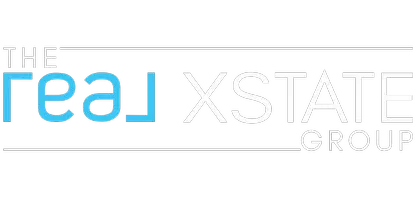How to use your 401k to purchase property.

🏡 Using Your 401(k) to Buy a Home in California: What You Need to Know
If you're looking to buy your first home in California, you might be considering tapping into your 401(k) to help cover the cost. With sky-high property prices and rising interest rates, finding enough cash for a down payment and closing costs can be tough — especially for first-time buyers.
While using your 401(k) can be an option, it’s important to understand how it works, the pros and cons, and potential tax implications before you make a move. Here's what you need to know.
🔓 Can You Use Your 401(k) to Buy a House?
Yes — you can use funds from your 401(k) for a home purchase, even as a first-time buyer. But how you access the funds makes a big difference in the cost and consequences.
You have three primary options:
1. 💳 Taking a 401(k) Loan
A 401(k) loan allows you to borrow from your retirement account and pay yourself back over time.
How it Works:
-
You borrow up to $50,000 or 50% of your vested balance, whichever is less.
-
Standard repayment term is 5 years, but some plans extend it for home purchases.
-
You repay the loan (plus interest) through payroll deductions.
-
The interest goes back into your 401(k) account — you're essentially paying yourself.
Pros:
-
No taxes or penalties if repaid on time.
-
Doesn’t reduce your retirement balance permanently.
-
Fast access to funds.
Cons:
-
If you leave your job, the loan may become due in full quickly.
-
If you default, it becomes a taxable distribution with a 10% early withdrawal penalty (if under age 59½).
-
You may lose out on market gains while the money is out of your account.
How to Do It:
-
Check with your plan administrator (often via your employer's HR portal).
-
Apply for a loan and indicate it’s for a home purchase — documentation like a purchase contract may be required.
2. 🚨 Making a 401(k) Hardship Withdrawal
A hardship withdrawal allows you to permanently take money out of your 401(k) for certain urgent needs — including a first-time home purchase.
How it Works:
-
You request a distribution due to "immediate and heavy financial need."
-
First-time home purchase is an approved reason, but only if your plan allows hardship withdrawals.
Pros:
-
No repayment required.
-
Can access more than you might be able to borrow with a loan.
Cons:
-
The amount withdrawn is subject to ordinary income tax.
-
If you're under 59½, you'll also pay a 10% early withdrawal penalty — unlike IRAs, 401(k)s don’t waive this for home purchases.
-
Permanently reduces your retirement savings.
How to Do It:
-
Contact your 401(k) provider to confirm eligibility.
-
Submit documentation (e.g., signed purchase agreement).
-
File IRS Form 5329 to report the early withdrawal and any penalties.
3. 🔁 Rolling Over to an IRA First (Advanced Option)
If you’re no longer with the employer who holds your 401(k), you might be able to roll over the funds into a traditional IRA, then take advantage of the $10,000 first-time homebuyer exception.
How it Works:
-
Roll over your 401(k) into a Traditional IRA.
-
Then take a qualified withdrawal of up to $10,000 for a first home purchase.
-
The 10% early withdrawal penalty is waived on that $10,000.
-
You still pay ordinary income tax on the amount withdrawn.
Pros:
-
Avoids the 10% penalty (up to $10k).
-
No repayment required.
Cons:
-
Taxes still apply.
-
Complex and time-sensitive — not all plans allow in-service rollovers.
🧮 California-Specific Considerations
-
California follows federal tax treatment, but adds state income tax on distributions.
-
No additional state penalties apply.
-
Because California home prices are so high, even $10,000–$50,000 from your 401(k) might only make a small dent in your down payment — especially in places like the Bay Area or Los Angeles.
✅ Quick Comparison
| Option | Best For | Taxes | Penalty | Repayment? |
|---|---|---|---|---|
| 401(k) Loan | Staying in job, want flexibility | ❌ | ❌ | Yes |
| Hardship Withdrawal | No other funds available | ✅ | ✅ (10%) | No |
| IRA Rollover + Withdrawal | Former employee, avoid penalty | ✅ | ❌ (up to $10k) | No |
📝 Final Thoughts
Using your 401(k) to fund a home purchase can be a helpful strategy in some cases — but it’s not without risks. In general:
-
A 401(k) loan is the safest option if you’re staying at your job and can commit to repaying it.
-
A hardship withdrawal should be a last resort due to the tax and penalty hit.
-
If you’ve left your job, consider an IRA rollover to access a penalty-free $10,000.
Always consult a financial advisor or tax professional to evaluate how each option impacts your specific financial situation.
Categories
Recent Posts










GET MORE INFORMATION

